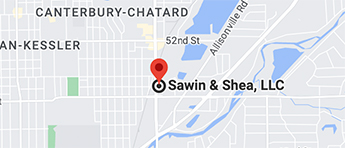When bills are piling up and you’re losing hope that there’s a light at the end of the tunnel, a bankruptcy reorganization plan can be the best path forward. and clarify the next steps in your financial future. Filing for bankruptcy keeps most creditors at bay so you get a chance to catch up.
How is Bankruptcy Reorganization Plan Defined Versus Liquidation Bankruptcy?
Bankruptcy gives you more options than most realize. Chapter 7 is also known as a liquidation bankruptcy where we ask the Court to discharge your debts outright. In exchange for the discharge in Chapter 7 the Court is looking at non-exempt assets that could be seized and turned into cash to pay your creditors back something. But in many cases, it’s much better to choose a bankruptcy reorganization plan instead. In reorganization, you develop a budget and detailed plan to pay back your creditors back what the law requires, in most cases cents on the dollar. Reorganization encompasses Chapter 13, Chapter 12, Chapter 11 and Chapter 9 plans.
What’s the Difference Among All the Numbered Bankruptcy Plans?
A bankruptcy attorney can help you understand all of the details involved, because each reorganization plan is unique:
- Chapter 13 – The most common option, Chapter 13 allows single and married people, including sole proprietors of businesses, to pay only disposable income – the amount above your living expenses – for three to five years. Debts are prioritized; unsecured debts that are lower priority, like medical bills and credit cards, may be forced to very low payouts with balances wiped out at the end of a plan.
- Chapter 12 – This is a specific type of bankruptcy for farm and fishing businesses.
- Chapter 11 – If you run any business that will not qualify under Chapter 13, Chapter 11 may be your best option. It can help you sell assets, reorganize the company, and pay back business creditors.
- Chapter 9 – This is just for government entities and is unlikely to apply to you.
Why Would I Choose a Reorganization Plan?
Reorganizing, rather than liquidating, can leave you in a better financial place in the long run. You can use it to show that you’ve made your very best attempt to pay creditors back, which may leave your credit history in a much better status after the bankruptcy. Reorganization can also protect assets like your home, so your life is less disrupted. An added benefit of reorganization is that it forces you to examine your finances in detail, so you’ll get a crystal-clear view of your financial footprint. This is especially important if you have a complex set of debts or are a sole proprietor of a business. Reorganization creates a built-in budgeting process that many people find refreshing.
Do Bankruptcy Reorganizations Ever Fail?
Sometimes people can’t follow through on a bankruptcy reorganization because something unexpected occurs, like a sudden job loss or a medical disaster. However, these situations don’t have to totally derail your bankruptcy plan. Work with an experienced bankruptcy attorney to cope with the challenge and keep your financial future on track. If you can stick to the payment plan, bankruptcy reorganization could change your life for the better and leave you in a very positive financial position.
Sawin & Shea – Indianapolis Bankruptcy Attorneys
Filing for bankruptcy is not the end. It’s the beginning of a new financial life for you. The Indiana bankruptcy attorneys at Sawin & Shea can help you get rid of the overwhelming debt and advise you on life after bankruptcy. We are here for you during this life-changing process. Please do not hesitate to call us today at 317-759-1483 or send an email for a free consultation. We are ready to help.



